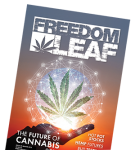Everything You Wanted to Know About Kratom
Kratom—the common name for the alkaloid-containing leaves of a tree native to Asia—has been used historically as a medicine and textile. The DEA is trying to ban kratom and add it to the list of Schedule I drugs.
What Is Kratom?
Kratom—Mitragyna speciosa—produces mitragynine (MG) and related compounds that have been shown to provide opioid-like pain relief with less of the toxic side effects associated with morphine and other opiates derived from the poppy plant. Kratom is the source of “selective full agonists” of human opioid receptors, and the Western world has been using it since the 1940s. At low doses it’s a mild stimulant and energy supplement; at higher doses, it’s used as an opiate substitute.
Mitragyna is a small genus in the Rubiaceae family. The best-known genus of the family is coffea, one of the most economically important plants. Coffee is a $15 billion export industry, second only to oil as the most well-traded commodity. MG is a minor constituent in young coffee plants, and the dominant indole alkaloid in older coffee plants.
Kratom has been used since ancient times, either chewed or dissolved in teas, for fever reduction, analgesia, diarrhea, coughing, hypertension and even depression. In modern times, M. speciosais used as a treatment for opiate withdrawal; it is also used by laborers to reduce fatigue.
It’s grown primarily in Southeast Asia, and is known variously as ithang, thom, hrathom, and kakaum in Thailand; biak-biak in Malaysia; kadamba, puri and keton in Indonesia; beinsa and beisaywatin Myanmar; giam in Vietnam; and mambog and polapupot in the Philippines.
Why Should We Care That the DEA Wants to Ban Kratom?
Defining substances as “drugs” or “food” has far-reaching effects. The DEA will probably declare kratom an official Schedule I drug in two years, despite the fact that it’s a plant, is reported to be helpful in treating addiction and no coroner has yet to attribute it as the cause of death. Sound familiar?
We should care, because the DEA is actively working to obstruct our right to choose medicines, herbal supplements and nutrition products. The FDA and DEA share a dangerous philosophy that demonizes botanical medicines and products, a prejudice that dates back to at least the 1940s, when dozens of plants, including cannabis, were removed from the U.S. Pharmacopeia. A series of court and administrative hearings led to the passage of the Dietary Supplement Health and Education Act (DSHEA) in 1994.
Is Kratom Truly an Alternative to Opiates?
Opioid drugs are extracts or analogs of compounds isolated from a single source, the poppy plant. However, the opioid-like MG compounds also display pain-relieving activity, due in large part to strong and unique interactions at opioid receptors.
Mitragynine is the major alkaloid found in mature kratom plants. MG and the very potent but less abundant 7-hydroxymitragynine (7-OH-MG), along with several synthetic MG analogs, have displayed opioid characteristics in basic research models.
Three compounds out of the 20 kratom alkaloids identified display affinity for the opioid receptors. However, there is little to no evidence that these MGs bind to opioid receptors in an identical manner. This is a very important distinction; for example, CBD and THC both interact with CB1 receptors, but in unique ways and at different sites on the protein. While 20 mg of THC ingested orally may cause intoxication, 500 mg of CBD can decrease anxiety. Hence, kratom may be the CBD of the opiate world.
How Did Kratom Catch on?
Humans love alkaloids, especially the ones that have medical utility and low toxicity. Here’s a short list of alkaloids that humans have known and used for a long time:
• Alkaloids of privilege: Morphine, nicotine, atropine and caffeine. The bark from Cinchona species contains the alkaloid quinine, which has been used for centuries as an antimalarial.
• Alkaloids of less privilege: Ibogaine, reserpine, geissoschizine methyl ether and physostigmine.
• Demonized alkaloid: Kratom
• Non-alkaloid opiate: Salvia
Is There a Downside to Kratom?
Kratom has never been known to kill anyone from a toxic overdose. However, MG can produce respiratory depression, though not as pronounced as when using morphine or codeine.
One of the main dangers related to kratom is the same for many other commercialized products; kratom’s image has suffered from the wanton distribution of unverified materials marketed as kratom. Various powders, in some cases kratom leaf powder, have been spiked with caffeine, tramadol or other pharmaceutical substances. These adulterated products, marketed under names such as Krypton, have been implicated in a number of reported fatalities. The greatest danger of kratom these days is from fake products mixed with FDA-approved substances.
Konclusion
The compounds in kratom stand to eventually replace modern opioids as treatments for many conditions. Kratom and its derivatives have the potential to be more potent pain relievers than morphine, with fewer side effects. Yet the DEA is cutting off the legal supply of kratom. Clearly, they prefer that people use highly addictive opioids such as morphine, codeine, methadone and oxycodone. Only a strong grassroots campaign will bring kratom back to its rightful place as a botanical medicine and herbal supplement.
If you enjoyed this Freedom Leaf article, subscribe to the magazine today!

